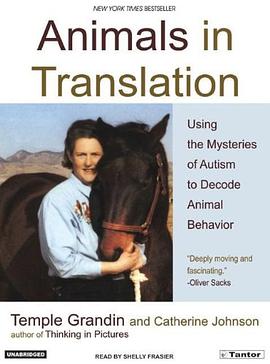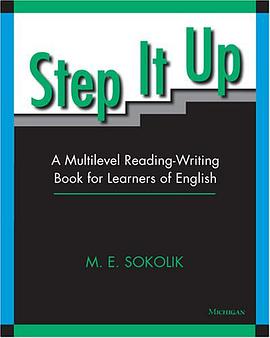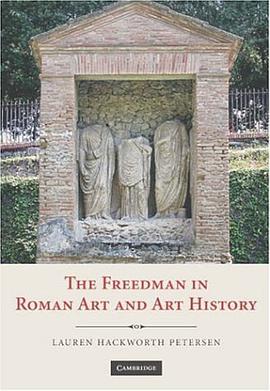

具体描述
How is Animals in Translation different from every other animal book ever published?Animals in Translation is like no other animal book because of Temple Grandin. As an animal scientist and a person with autism, her professional training and personal history have created a perspective like no other thinker in the field, and this is her exciting, groundbreaking view of the intersection of autism and animal. Unlike other well-known writers in the field of animal behavior -- When Elephants Weep by psychoanalyst Jeffrey Moussaleff Masson, How Dogs Think by psychologist and dog trainer Stanley Coren, and The Hidden Life of Dogs by anthropologist Elizabeth Marsha Thomas -- Temple Grandin is an animal scientist who has devoted the last 30 years of her life to the study of animals. Animals in Translation is the culmination of that life's work -- a book whose sweep is huge, including just about anything that gallops, trots, slithers, walks, or flies. Temple Grandin is like no other author on the subject of animals because of her training and because of her autism; understanding animals is in her blood and her bones. Animals in Translation ... * redefines consciousness and argues that language is not a requirement for consciousness * categorizes autism as a way station on the road from animals to humans * explores the "Interpreter" in the normal human brain that filters out detail, creating an unintentional blindness that animals and autistics do not suffer from * applies the autism theory of "hyper-specificity' to animals, meaning that there is no forest, only trees, trees, and more trees * argues that the single worst thing you cando to an animal is make it feel afraid * examines how humans and animals use their emotions, including to predict the future * compares animals to autistic savants, in fact declaring that animals may be autistic savants, with special forms of genius that normal people cannot see * explains that most animals have "super-human" skills: animals have animal genius * reveals the abilities handicapped people, and animals, have that normal people don't
作者简介
目录信息
读后感
各位看完本书后,如果对作者格兰丁感兴趣,可以看看《火星上的人类学家》这本书。(新浪爱问上有TXT下载)书的第一章就是写她的,篇幅不长,可以看做是一篇小传吧。书里从一个心理学家的角度描述了她--一个自闭症患者和正常人是多么的不同。 在常人眼里格兰丁举止怪异...
评分这本书是在之前去图书馆的时候在自然科学书架里面看到的,想看这本书的第一原因是被书名吸引了。因为近来读国外书多一点,就留神注意了一下原书名,发现中文的书名不仅是意译,而且翻译得还很偏,英文标题是这样的“ANIMALS IN TRANSLATION”-直译应该是“翻译动物”或者更贴切...
评分移动互联网已经成为了一个庞然大物,PC时代所没有达成的事情、被手机达成了,而在国内的移动互联网应用中,手握10亿用户的有且只有一个,就是微信。标题的这句话正是微信的缔造者——张小龙在微信上线2天后的凌晨2点,于早已过气的饭否上敲下来的。 而标题的这句话也以另一种...
评分希望看了我的笔记,你也和我一样觉得这是一本有趣的书 -大象用人类听不到的声波互传信息,跺脚也是一种传递方式 -选择单性状繁殖会让公鸡变成强奸犯 -中国的猪比美国的猪更热衷做那种事,一有机会就会实施。和现实中的人刚好相反,看来在性方面,中国的猪还是为国争了光 -...
评分动物对人们喜爱的杀伤力是无穷的。太萌?太帅?太猛?对于那些喜欢动物,或者在工作中要和动物接触的人而言,你真的了解动物嘛?知名动物学家葛兰汀(Temple Grandin)和神经心理学领域的研究者及作家约翰逊(Catherine Johnson)合著的《我们为什么不说话:动物的行为、情感...
用户评价
相关图书
本站所有内容均为互联网搜索引擎提供的公开搜索信息,本站不存储任何数据与内容,任何内容与数据均与本站无关,如有需要请联系相关搜索引擎包括但不限于百度,google,bing,sogou 等
© 2025 book.wenda123.org All Rights Reserved. 图书目录大全 版权所有




















